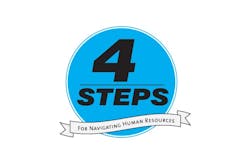When Brian Greenley bought Littleton, Colo.–based Maaco Collision Repair Auto Painting & Glass, he knew he would have to take on human resources duties.
“It’s always been the owner’s responsibility,” he says of his 34-employee shop. “We can’t afford to hire additional administrative help.
Since buying the shop in 1991, he’s learned ways to successfully and affordably deal with human resources issues. He hired a company that helped him create an employee handbook, and that continually helps with health and safety compliance issues. When he has questions, he turns to his colleagues and friends in the industry, franchise owners and operators in his company, and other business owners in his community.
Not everyone pays as much attention to human resources issues; many shop owners and operators see them as a nuisance, says Jim Hazen, a consultant who specializes in automotive human resources. But how you deal with human resources can make or break your business. For example, a wrongful termination battle costs an average of $370,000, Hazen says. Or consider that employees are responsible for 90 percent of theft and fraud at companies, he says. And fines for not following immigration or wage and hour laws could cost you tens of thousands of dollars, says Michael Haberman, consultant and owner at Omega HR Solutions.
“That’ll pretty much put you out of business,” he says.
—Jim Hazen, owner, Applied Behavioral Insights
Greenley, Haberman, Hazen and David Baker, the managing director and CEO of consulting firm Human Capital Advisors, shed some light on what steps shops can take to manage human resources without a dedicated department. They explain how you can ward off potential problems, stay compliant with state and federal laws, and how to get advice that can save time and money.
Hiring the right technicians, painters, managers, office staff and others is key in preventing human resources problems, Hazen says. According to the U.S. Department of Labor, a bad hire can cost a company tens of thousands of dollars. But when a person fits the job, and fits the company, they are much more likely to be productive in the shop, ultimately making customers happy and bringing in more revenue.
Hazen says often a hiring decision is made in the first four minutes of an interview, and it’s made based on chemistry. It’s important to create a hiring process that is as objective as it can be. “The hiring process is just so totally subjective,” he says. “Anything that puts objectivity into it really helps it a lot.”
Here are some ways to do that:
Background checks. Talk with past employers and references. Then, Hazen says, check out references of references. Ask about the person you might be hiring to see what his or her character traits are, as well as personality, work style, and other information you want to know.
Ask for work samples. If you are hiring a painter, maybe you want to see an example of that person’s work, Hazen says. Or maybe you want to even administer a painting test during the process.
Involve a team. Because the hiring process can be so subjective, Hazen suggests assembling a team of people who will all interview the applicant. Sometimes a team of two or three people will look at the résumé, then interview. Each person asks the same questions so that the team can compare notes. You want to add people to the hiring team who might be working with the new employee. This gives staff a feeling of ownership in the process, as well as responsibility and accountability, Hazen says.
Create a finder’s fee. If someone on your staff recommends a person who gets hired at the shop and works there six months or longer, create a reward for your shop’s recruiter. This could be about $200 or $300, Hazen says.
Administer a pre-employment assessment. Often people lie on their résumé, and many hiring decisions are made hastily to fill an open position, Hazen says. But he says these assessments “weed out the axe murderers”—people who are likely to steal, lie, smoke in the paint room, or clash with the shop’s culture or environment. He says these tests measure honesty, integrity, reliability, cognitive skills and abilities, behavioral traits, career interests and personality.
—Michael Haberman, owner, Omega HR Solutions
Other helpful hiring hints: Greenley says it’s important to know who you’re looking for before you even begin the process. He has looked for people who are clean cut, who understand the job they need to do, who are good communicators, follow directions and are self-starters. These are great things to interview for.
Once they get in the door, he says, it’s important to keep them motivated with good pay, giving them the right tools to be successful, and clearing any obstacles to get the job done well.
That has worked well for him. “The majority of my employees have been with me for over ten years,” he says.
Multiple scenarios exist in which you need to ask a trusted friend, colleague or advisor for advice. Maybe you have an employee to fire and you don’t know what to do. Maybe you need to learn more about how to complete performance reviews. Or maybe you have a situation with an underperforming employee, and you want to know how to handle a confrontation.
Haberman says you can get free advice from organizations or business colleagues. For example, local chamber of commerce organizations usually have someone who works in human resources and can answer questions. They can often help with a range of topics, he says, from hiring to pay to management, regulation, health care and more.
“They realize how important it is for their membership,” he says.
Another great resource is the Society for Human Resource Management (SHRM), Haberman says. It costs $180 per year, but offers multitudes of resources for businesses of all sizes. Resources include training, conferences, legal updates, as well as guidance on everything from benefits to employee relations. He says SHRM also offers an ask-the-adviser function on its website, where a member can get live advice or guidance on a question or concern.
Shop owners can also look for a friend, colleague or mentor who you can turn to if you’re facing a difficult employee issue. This is a person whose opinion you need to respect, and someone you can trust.
“Because face it, you’re going to be airing your dirty laundry to him—who said what, and what really happened,” he says.
When Hazen’s working with shops on employee records, he points to the federal record retention requirements. This is important for documentation purposes if someone sues for wrongful termination, if an employee files for unemployment, or if a worker challenges disciplinary action.
For example, he says, if an employee says they didn’t know they could be fired for smoking in the shop, it’s important to keep records showing that the policy exists and the employee was informed of the rule. He says many states will allow you to fire workers for no reason, but he says “employees can sue you for no reason,” as well.
Here are some guidelines that Hazen provided for what records to keep and how long they need to be kept:
• Hiring records. Keep job applications, résumés, records that show refusal to hire, advertisements about job openings, promotions and training opportunities. Keep these records for one year.
• Basic employee information. Keep I-9 forms three years after hire date, or one year after termination, whichever is later. Keep these records separate for confidentiality reasons.
• Payroll records. For four years, keep records showing the following information: Employee’s name, address, social security number, date of birth, job classification, occupation, daily schedules, pay rate, weekly compensation, amounts and dates of payments, daily and weekly hours, overtime hours, pay, annuity and pension payments, benefits, deductions and additions.
• Employment Actions. The following records of these actions need to be kept for a year: Hiring, separation, rehiring, promotion, demotion, transfer, layoff, recalls, and employment assessment results.
• Health, medical and safety records. These vary greatly, and must be kept separately. Requests for accommodation of disability, for example, must be kept for one year. Family Medical Leave Act records must be kept for three years. Documents for job-related illnesses and injuries must be kept for five years. And shops need to keep medical exams, as well as records of exposure to toxic substances and blood-borne pathogens, for 30 years. These records must be kept separate for confidentiality reasons.
Compliance with state and federal laws is key.
But if Haberman had to choose the top laws that shop owners need to know, he recommends that every employer understand wage and hour laws, as well as immigration law.
These are important to follow to make sure you’re paying employees right, and to make sure you’re crossing all the T’s and dotting all the I’s.
Say you’re a shop with 20 employees who have come and gone over the years, and any one of those employees did not provide two forms of identification, sign or date paperwork, or if the company’s name wasn’t on the form. That could cost a shop owner a whopping $1,000 per form, per staff member, Haberman says.
Hazen says many times, employment records are documents that companies need to keep because of federal laws. Contacting the local Chamber of Commerce can help businesses get up to speed on the federal as well as state laws.




